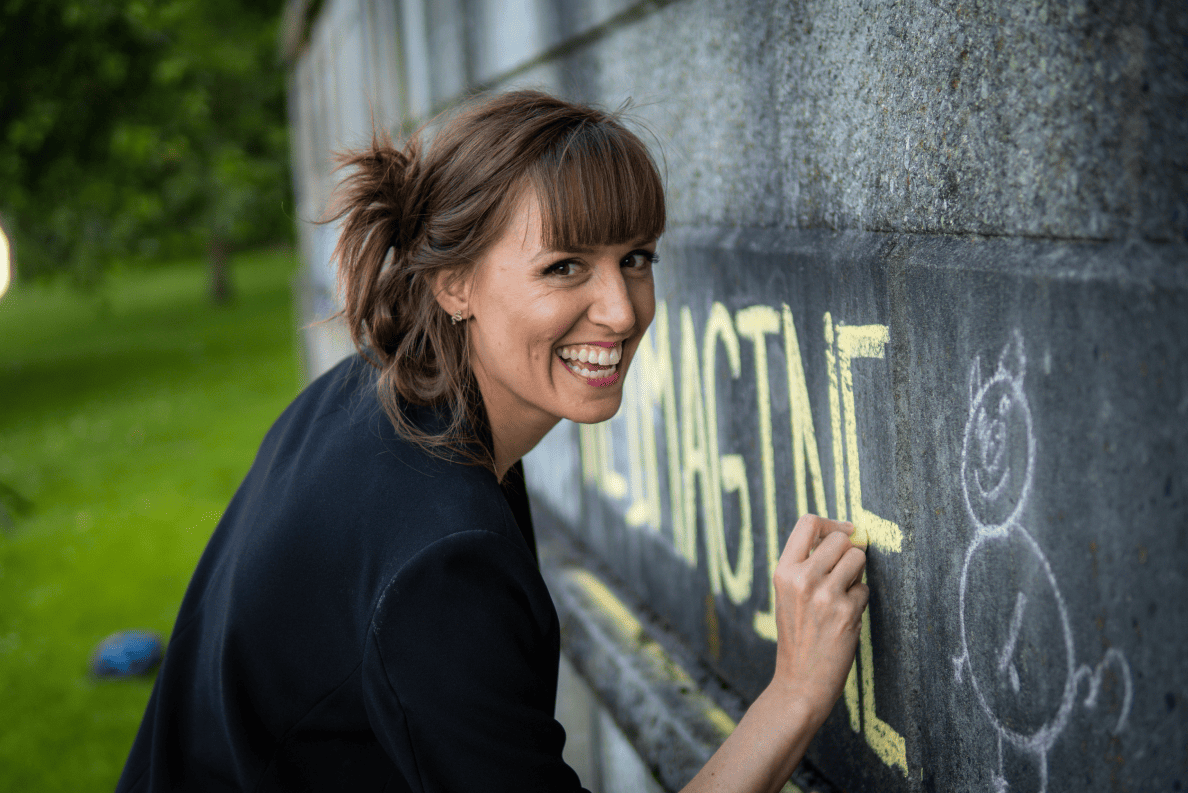Humanity will only benefit from diverse and divergent views of the future
It doesn’t take a futurist to see an opportunity.
Most searches of “top futurist” yield a similar result. They range from the likes of James Canton, the former Apple exec turned “visionary business advisor” for the Institute for Global Futures, to William Gibson, the American-Canadian cyberpunk author, to Ray Kurzweil, computer scientist and Google AI visionary.
All great minds – all a very similar demographic.
But there are exceptions in looks and outlooks – theoretical physicist and author Michio Kaku and global trends authority Anne Lise Kjaer, spring to mind. Few would argue that as a profession, futurism today offers a uniform vantage point of tomorrow.
That’s a missed opportunity for all of humanity, says Lindsay Angelo.

Making of a futurist
Angelo has always thought big, looked far and sought out hidden patterns. Her mind makes connections across space and time. She loves to learn about new places and spaces, new ideas and new innovations.
A born entrepreneur, she started her own apparel venture as a teenager. That led her to working for an angel investment firm that was incubating early-stage brands, then later to working in strategy across health and wellness, retail, entertainment, and technology. The former NCAA DI volleyball player arrived at futurist work via her corporate strategy roots – a relationship she describes as tight as “peanut butter and jelly.”
Now on her own, she works closely with both start-ups and Fortune 500 companies, each looking to create big impact in the world.
“Futurism is amazing work. It’s the earliest signals you can look to and see opportunities to innovate in ways that make a difference for people and for the planet,” she said. “There’s a big betterment angle to it. Part of my purpose is to think about how we unleash the superpowers of business to solve much bigger problems in the world.”
“That pulled me in from the start. It’s all super exciting to me. But it’s not for everyone. It can be overwhelming at times to think about the array of scenarios that could unfold, but for me, I love that aspect of it.”
Enjoy this article? Read Ecommerce Insider magazine for more insights, tips and articles like this.
Download magazine nowLooking into the future
Nobody turns down a sneak peek at tomorrow. Perhaps that’s why, increasingly, futurists play a critical role in analyzing trends, predicting potential outcomes and envisioning solutions for everyone from business and industry to federal and local governments, to social media and entertainment companies.
An unknown future requires a nuanced vision to understand it fully. Angelo says it’s important to have as many eyes cast forward from as many varied vantage points as possible. That’s still a struggle among the futurist ranks, particularly for women.
“Because the field of futurism and futurists are often talking directly to the C suite of companies, the influence factor there is huge,” Angelo says. “So, it’s not only that female voices are less represented amongst futurists, but that’s compounded because organizations are then acting on insight delivered by a singular voice. That rarely leads to great outcomes.”
The numbers are better than they were a generation ago, and far better than the profession’s nearly all-male roots in the 1960s, but there is a lot of room for improvement.
Today, women make up 1 in 3 members of the Association of Professional Futurists and 1 in 4 members of the World Future Society. In total, about 1/4 of working futurists are female, but that number significantly drops when you look at the top futurists. Women also make up less than 5% of winners or nominees of awards within the field.
This gender gap transcends the domain of futurism, Angelo says, as it extends into other areas where savvy and strategic foresight is needed, like politics, science and tech.
“What happens in that scenario is you end up getting a very singular version of the future or what the future could be. That’s a problem,” she said. “Picture that we have 75 males and 25 females in a room crafting the future. That’s concerning and calls for change. And it’s not just gender diversity that’s needed in the field of futurism – it’s all types of diversity.”
Lifting up missing voices
Angelo is among many in the field seeking ways to empower diversity within futurism, encouraging females and visible minorities to enter the field. Her Futurist in 50 Days program aims to inspire aspiring futurists.
“There’s bias in everything. We come at it from our own vantage point,” she explained. “So, if you have a homogenous group creating those potential possibilities, those paths, that’s a problem. You’re only bringing a singular perspective to the table.
“With more diversity, we create better futures, more compassionate futures.”
Tip:
To learn more about Lindsay Angelo, visit lindsayangelo.com or check out her Strategic Thinking Masterclass.
Delivering sustainable business solutions
Canada Post can support your sustainability objectives with solutions, tools and resources to meet expectations of environmentally conscious consumers.
Let’s chat